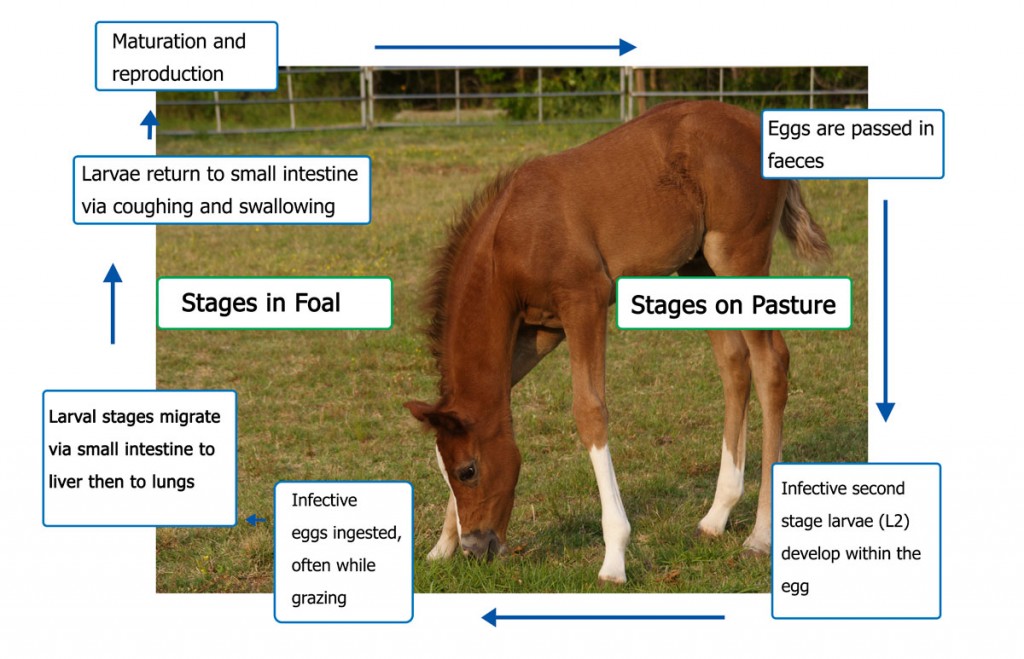Horses: Ascarid Life Cycle
Life Cycle of Parascaris equorum (ascarids)
Adult female ascarids living in the small intestine of the horse shed large numbers of eggs in the faeces. The eggs are surrounded by a thick shell which allows them to withstand extremes of environmental conditions (dry conditions and freezing). The eggs may survive for many years, but generally for a number of months. The eggs are sticky and adhere to the skin (perineum, udder) of the mare and to objects in the environment.
Within the egg, the larvae develop to the L2 stage, when they are infective. The infective eggs, after ingestion by the foal (often while grazing), hatch in the small intestine and burrow through the intestinal mucosa and are carried via the blood stream to the liver and lungs. The larvae are then coughed up, swallowed and mature to adults in the small intestine. The full life cycle is about 10-12 weeks.

